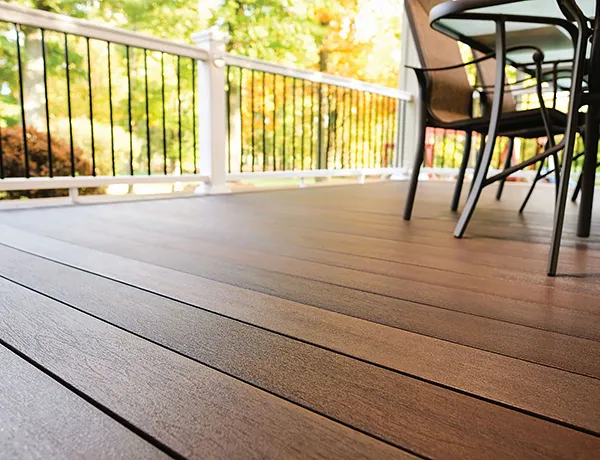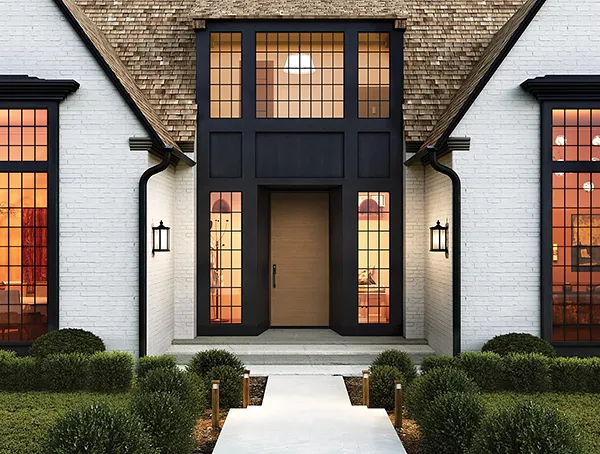Choosing Eco-Conscious Products to Shrink Your Impact
by Tammy Crosby, Editor-In-Chief for The House Designers
It’s not always easy to make environmentally friendly choices, but every little bit has a positive impact on the planet! Building a house means making a lot of product decisions, and that gives you the opportunity to really focus in on materials and companies that aim to reduce waste and improve efficiency. There are all sorts of ways to make more eco-friendly purchases—here are some things to look out for, and a few of our favorite products that hit the mark!

Recycling to Address the Landfill Crisis
Many of us recycle household waste like bottles, cans, and cardboard without a second thought. We do so automatically these days, and since few of us ever see the results whether we do or don’t, it’s normal to forget what recycling actually does. First, it reclaims resources that can be processed and used again, thereby reducing demand on the environment from damaging activities like mining and harvesting lumber. Second, it decreases the volume of waste going into landfills, where trash is layered and compacted so much that it never breaks down and just continues to build up over time. If this sounds like an issue, you’re right—the United States is running toward an ecological disaster as we run out of room to put trash, and we’re on pace to do just that in under two decades. Addressing the landfill crisis needs to be a top priority across the board to make a meaningful difference.
Aim to minimize your landfill contributions by recycling, composting, and making a conscious decision to purchase from companies that maximize their own waste recovery and recycle materials from other sources into new products. Manufacturing can create a lot of waste and simply discarding it adds up quickly. A responsible manufacturer will capture their scraps to rework into a product the next time around. Depending on the material in question, it can also be used as fuel to heat the building or power the plant in some cases! Then there are recycled materials from outside sources—they could end up in a landfill, but what a waste that would be when they are still usable. Modern companies can transform and breathe new life into old paper, glass, and plastic to create all sorts of things. It’s a great solution for you and the environment!

Nearby & Lightweight Products to Reduce Carbon Emissions
No matter how something is produced or what it is made of, it still has to travel to you. The less the distance traveled, the more eco-friendly it is because covering distance takes energy, and that means carbon emissions. Luckily, there are tons of things you can do to reduce your shipping carbon footprint—everything from supporting local farms, which reduces reliance on far-away and environmentally devastating factory farming, to buying products that are made in America rather than abroad. The United States has a long and rich history of manufacturing as well as higher standards and more quality control than plants overseas, so it really is a win-win. Many companies are centrally located or have a few factories around the country to serve the most consumers in the fewest miles, too.
Shipping distance isn’t the only variable that affects carbon emissions—higher weight will also burn more fuel to cover the same distance. You can’t always select lightweight materials because some necessary goods are heavy by nature, but when you can, the decision will often yield even more perks. Lightweight products often cost less than their heavier counterparts, and that savings will continue if you’re buying something that requires installation. Why? Less weight typically means quicker and easier handling, and that translates to fewer manhours needed. This is why it’s so important to look at your options from all angles!

Durable & Energy-Efficient Goods for Long-Term Savings
Finally, consider the quality of what you’re buying. Cheap goods wear out—if you have to replace them more often, they cost you more and create more strain on our planet’s resources. Think of durable products as a long-term investment if you get sticker shock, because they will save money over the years compared to inferior alternatives. Manufacturers that have confidence in their products should also put your mind at ease with guarantees and warranties. With that added security, even if something does happen, you can rely on the investment you already made to make things right again.
Of course, durability isn’t the only quality to consider when it comes to making eco-conscious purchases. You should also prioritize energy efficiency whenever possible. This is another way to reap long-term savings at the same time as reducing environmentally damaging consumption! Look for ENERGY STAR® rated products—this certification can mean different things depending on the product type, like electronics that use less power or exterior home finishes with high R-values for better insulation. This is a good first step, but you can also take a deeper look and compare the specs of competing products. Don’t be afraid to ask questions if you have any trouble finding this information.
Looking for great products from eco-conscious manufacturers to complete your home? Explore the brands and products featured here! Fiberon® decking, Fypon® columns and millwork, and Therma-Tru® doors all provide homeowners with exceptionally beautiful and durable finishes. They also check the other boxes with their focus on reducing landfill waste and maintaining stateside production facilities—Therma-Tru® and Fypon® are centrally located in Ohio while Fiberon® manufactures in North Carolina and Idaho to serve the entire country with ease. Don’t hesitate to reach out if you have any questions!
1Comparison of R-values of fiberglass to wood doors (both without glass).